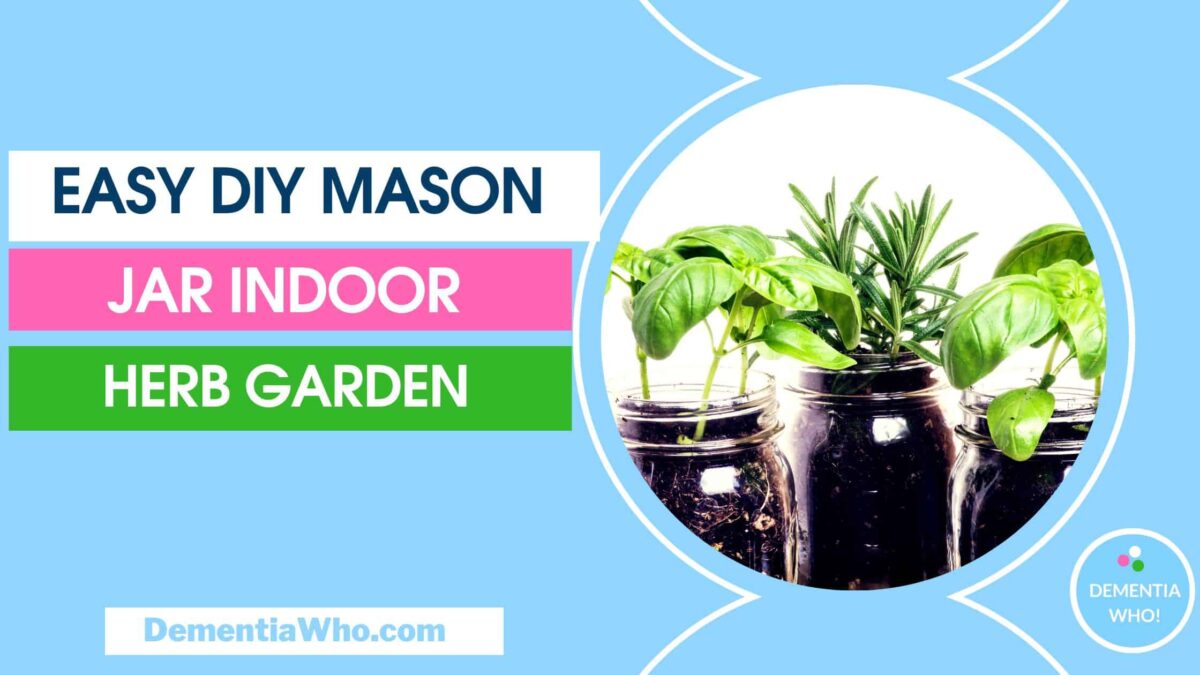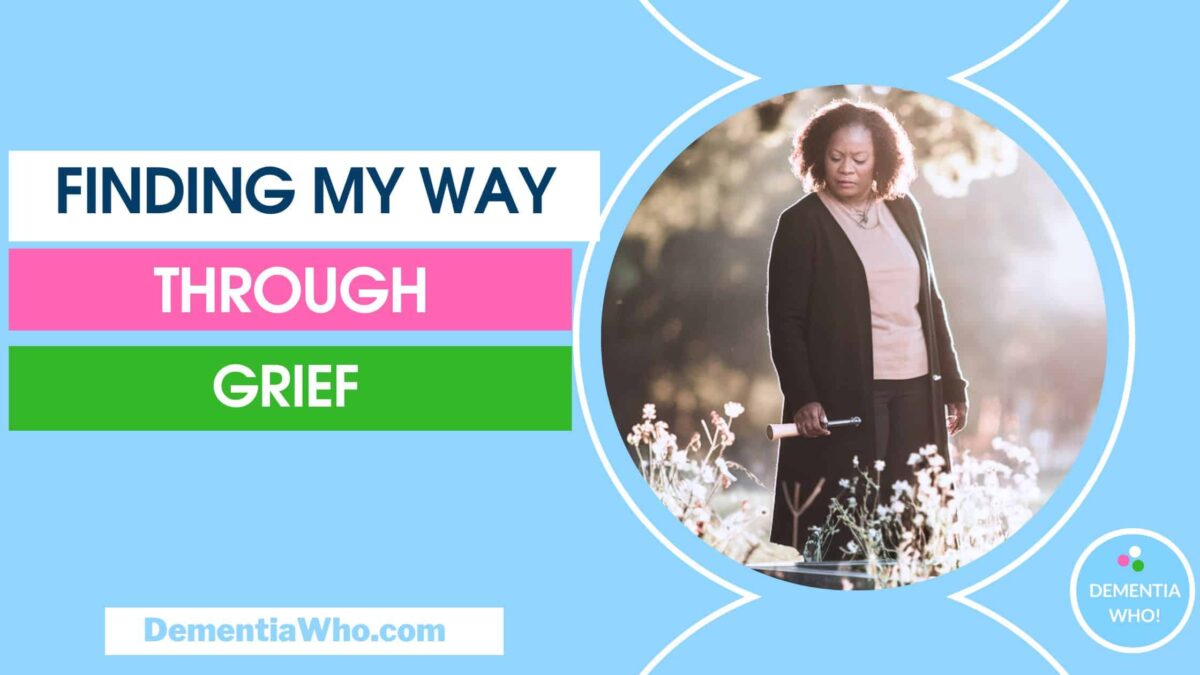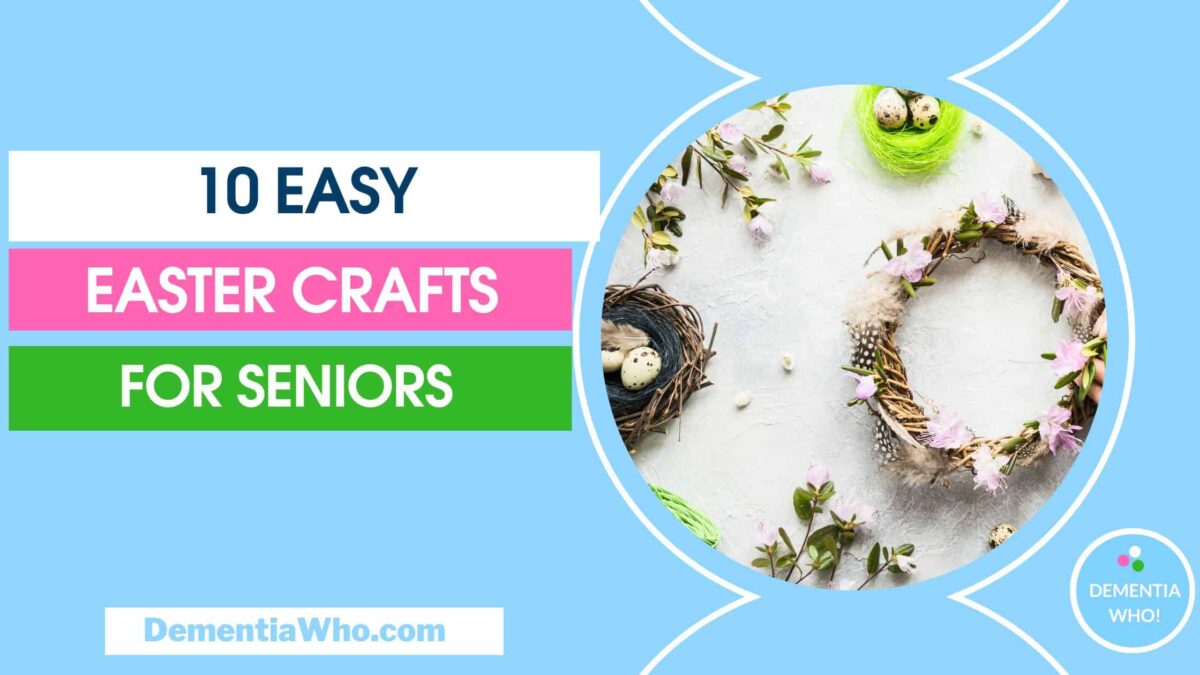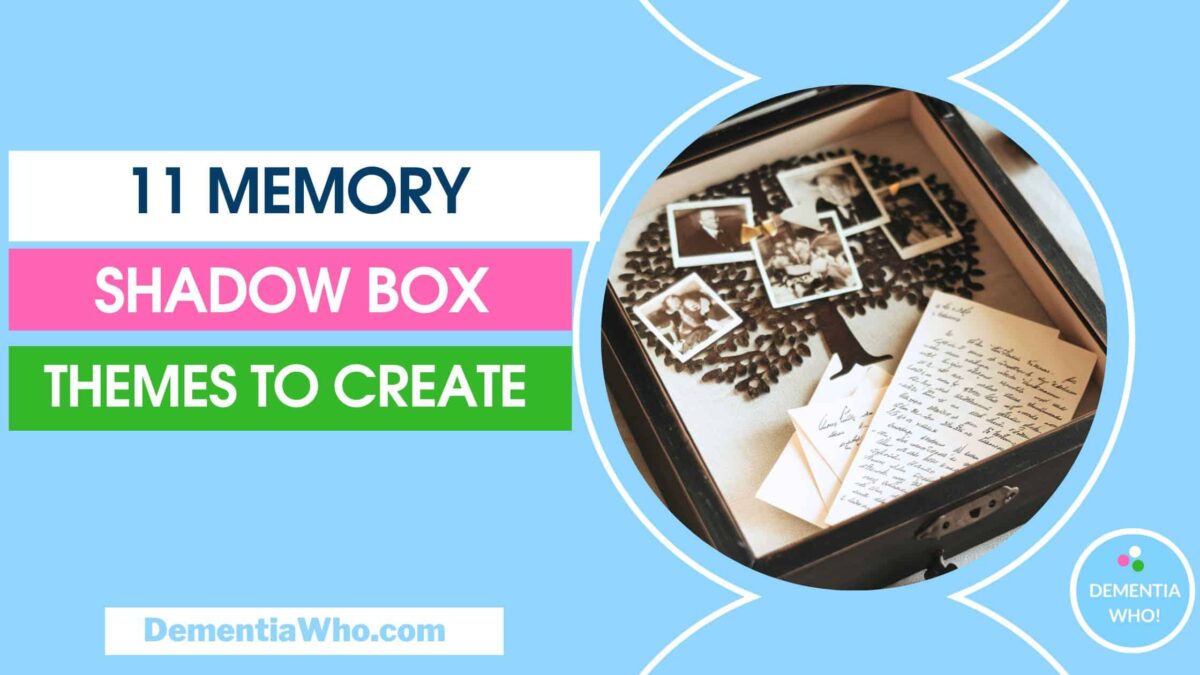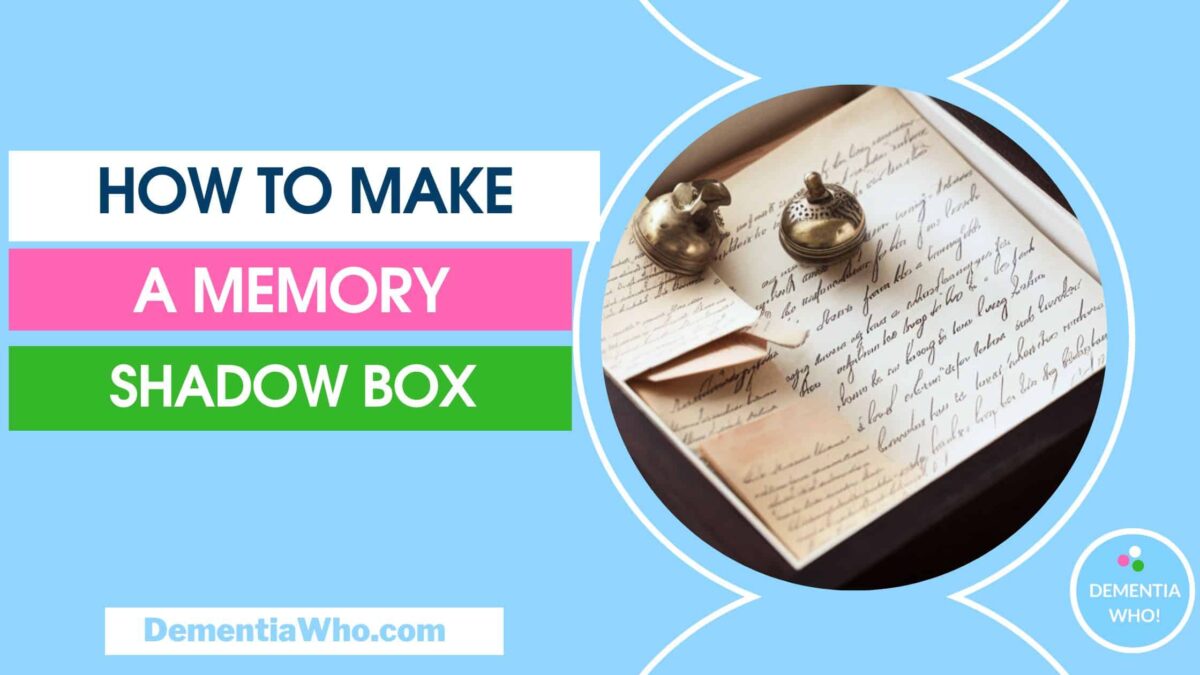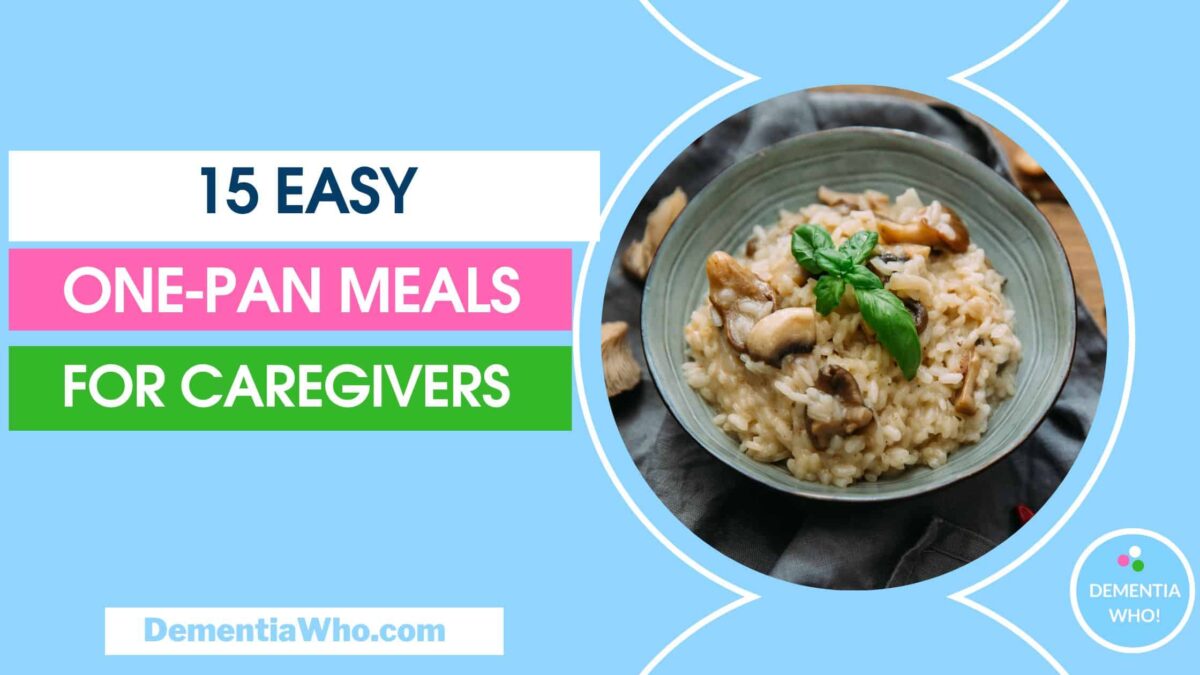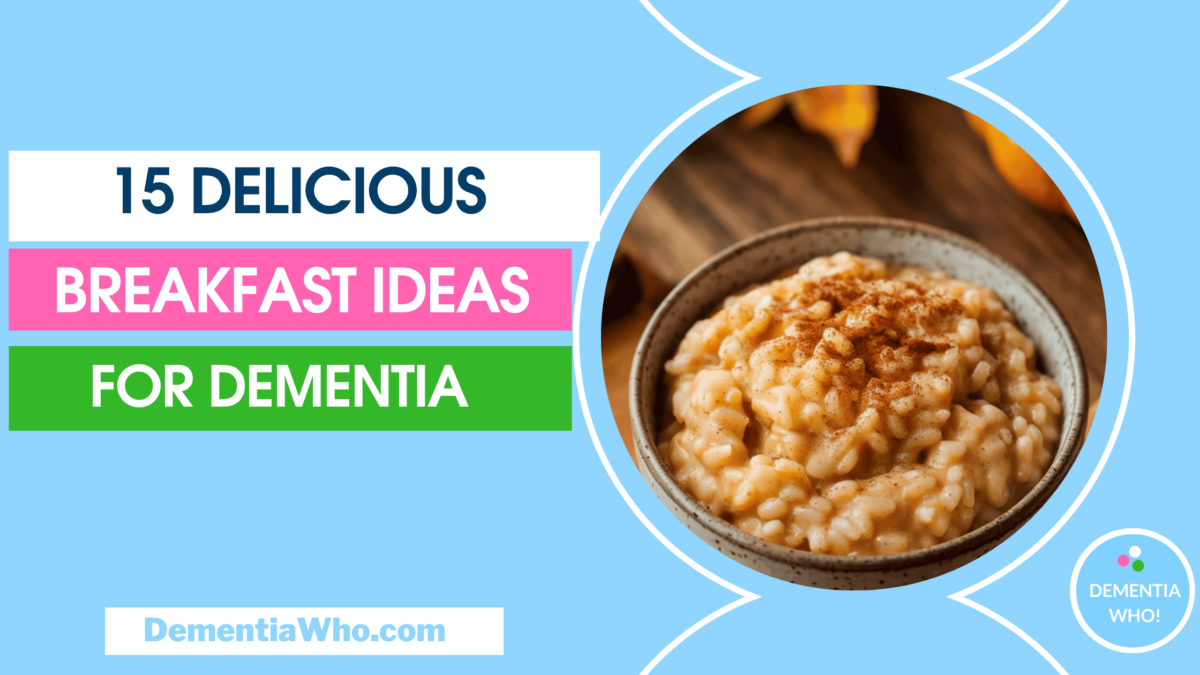Are you worried about kitchen safety for your loved one with dementia? This article will focus on tips for ensuring you have a dementia friendly kitchen for your loved ones.
- How do I make my Kitchen Dementia Friendly?
- Time to Declutter Your Kitchen
- Use Established Routines
- Kitchen Safety Devices & Appliances
- Add Signage: Reminder Notes/Board & Labelling
- Use Adaptive Kitchen Utensils/Equipment
- Remove hazards
- Improve Kitchen Lighting
- Ensure Line of Sight
- Differentiate Kitchen Colours
- Advance Planning
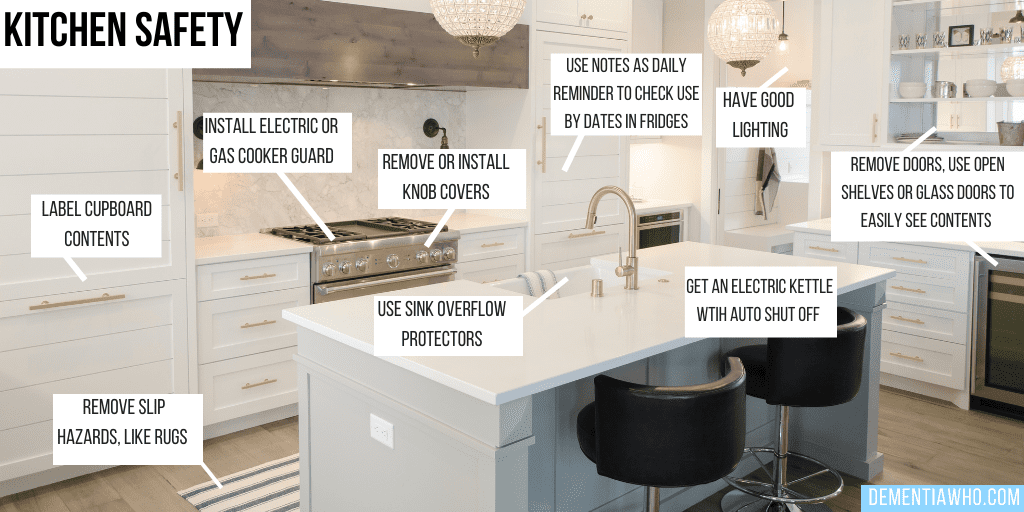
How do I make my Kitchen Dementia Friendly?
You can do this by identifying kitchen hazards, personal safety risks and reducing confusing kitchen elements whilst promoting independence for people living with dementia. It’s assessing the kitchen’s physical environment to adapt or remove obstacles to make your kitchen dementia friendly for your loved ones.
It doesn’t mean doing everything at once. It means looking at what needs to change now to improve dementia care. However, the sooner you make the changes, the sooner someone can adapt.
Time to Declutter Your Kitchen
Decluttering is a crucial factor in making a kitchen safe for dementia.
Reduce the number of options of plates, pots, cups, glasses, and cutlery to what’s just needed and store the other items used for special occasions.
Change items into non-breakable options where possible, like plates and cups
Placing heavy items at an appropriate height level, having a tray on the counter with the most used things, like tea, coffee, sugar, and a jar of cooking utensils, all on display.
Be careful when safety proofing a kitchen for someone with dementia as they may have built up muscle memory of where and how things work. So make changes early that work for them, and look out for coping routines that they’ve have developed that can be incorporated into any changes.
Use Established Routines
Routines are crucial if someone with dementia is living independently.
Routines like having a weekly shop delivered or veg boxes help move new food in and old food out.
If you eat yoghurt every day or make a milk-based cereal every day, then turnover will be quicker and likely before sell-by dates are reached. So check what routines your loved one engages in and whether they still do them.
They may adapt by choosing ready meals from supermarkets or Wiltshire Foods that can just be microwaved.
Remember, dementia is progressive, so instead of taking away independence, look at what can enable them to live their best life.
If they live with you, it can be sometimes harder not to step in and take over, but keep in mind that their capabilities will deteriorate – remember the old adage use it or lose it!
Kitchen Safety Devices & Appliances
You can purchase kitchen safety devices & appliances that can be used to mitigate personal safety risks whilst still retaining the ability of someone with dementia to maintain independence.
These are devices to consider when you’re loved one has progressed to a stage where a high risk exists, or you’ve experienced several near misses, e.g. leaving the gas on without igniting it. You can also discuss it with them before that stage of dementia arises and mutually agree to an approach as part of your advance planning.
Some devices can automatically turn off a cooker if left attended or when a smoke alarm is triggered known as a cooker shut off the device. Some new gas cookers have an automatic shut-off if the gas isn’t ignited.
Gas Locking Valve – allow you to shut the gas off completely to a cooker at times when cooking isn’t happening.
Water overflow devices can prevent leaks and flooding like a Magiplug
Smoke Alarms & Carbon Monoxide alarms can help alert you if smoke or gas is detected
Fridge alarms can advise if a door is left open and avoid food becoming unsafe because of lower temperatures.
You can read more in this article 7 Dementia Friendly Kitchen Appliances & Devices
Add Signage: Reminder Notes/Board & Labelling
Have an area where you can have a daily reminder or notes to check things like use-by dates
Use labelling for cupboard doors to identify their contents – label cupboards with pictures or words e.g. Cups, Plates, Cutlery, Pots & Pans etc.
Use Adaptive Kitchen Utensils/Equipment
Adaptive equipment can help maintain independence and improve coordination, help secure objects or improve grip. Things like:-
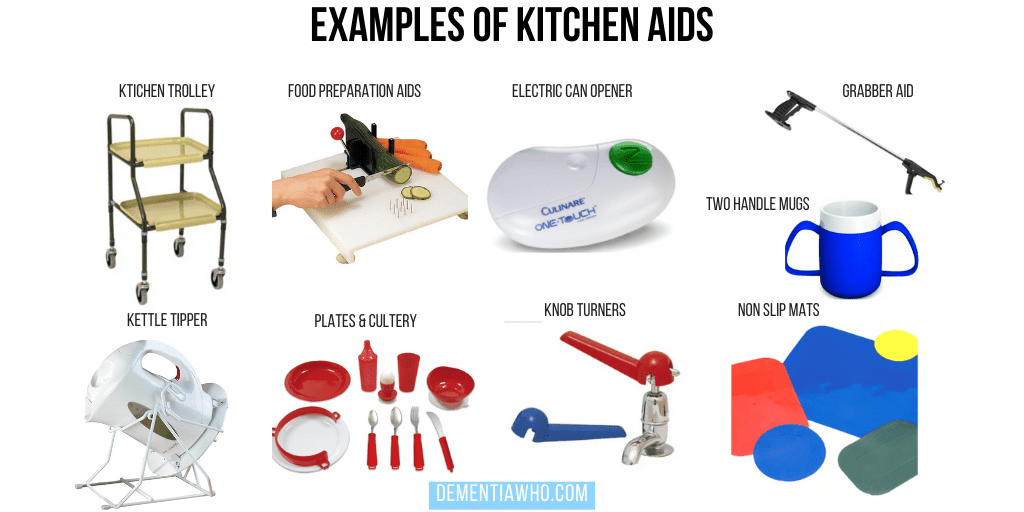
- Non Slip mats can keep chopping boards, plates, cups etc. in place
- Cutlery with larger grips, utensils that have right-angled grips,
- Kettle tippers
- Magnetic can openers, grip bottle openers.
- Tap turners to help with grip
- Double-handed mugs, surround plates etc.
- Grabber/Reacher Aids to avoid bending down for small items, reduce fall risks
Remove hazards
What can you see as a hazard knowing the capabilities and frailties of your loved ones with dementia?
Do they have issues with balance, vision, memory, trouble walking, etc.
Do they need a stool or seating? Look around the kitchen with a critical eye? What can you both see that may be a potential hazard.
- Rugs and mats could be a tripping hazard
- Cleaning Liquids can be mistaken for refreshments
- A kettle that can be too hot to touch, too heavy, or mistaken for cooker top kettles
- The hot water tap temperature may be too high, resulting in scalds -reduce hot water temperature.
- Do you need additional aids added, like a grab rail?
Various options can help support independence. You can find more items at Living Made Easy or Essential Aids
Improve Kitchen Lighting
Does the kitchen have good lighting? Three lighting types exist – ambient lighting, task lighting, and accent lighting. For safety reasons, the task and ambient lighting are key.
The ambient lighting is the overall light in the room. Is that bright enough to see everything in the kitchen and avoid potential hazards?
Task lighting is also vital for food preparation, lighting the cooking area, under dark areas like cabinets to remove any dark shadows etc. Can you add spotlights, LED lights or under-cabinet lights to make it safer?
Can you use voice-activated technology like Alexa or Google Home to make it easier to control the lights or use motion sensor lights for certain areas?
Ensure Line of Sight
Is there a good line of sight into the kitchen? Sometimes closed doors can act as obstacles for someone with dementia to identify the room. Removing the door or adding a label can help resolve that.
Can you use glass cupboard doors or remove them entirely to see the content?
Open shelving is another alternative to improving the line of sight for items used in the kitchen.
Leaving things on trays on the counter grouped by purpose can also help, like tea/coffee making things.
Differentiate Kitchen Colours
Are your kitchen colours distinct enough so that things don’t merge?
Are the walls differentiated in colour from the floor? It makes it more difficult to see where one ends and the other starts.
Avoid using dark colour flooring as it can be mistaken for a hole
Avoiding shiny coloured surfaces that can reflect light or have specs of glitter etc., can be problematic for someone with dementia.
Are light and socket switches distinguishable from the wall – try to paint or add tape to highlight them?
Advance Planning
If you’re thinking of doing up the kitchen or about to buy a new appliance, you can make advance decisions that help make the kitchen safe for dementia.
For example, mum was diagnosed the same year as our gas cooker decided to pack up. We decided that the replacement would be an electric cooker to avoid issues with gas being left on when mum’s dementia progressed.
It took us a while to learn to use an electric cooker, but the change was done early on in her Alzheimer’s diagnosis, and she adjusted quickly. It gave us peace of mind that we’d future-proofed the cooker.
These are all practical steps that can be taken to improve home safety for a person living with dementia.


